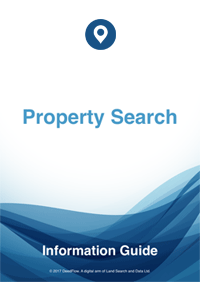Enforcement of a Breached Restrictive Covenant
Contents
Overview
Sometimes dated Restrictive Covenants lose their viability and in such cases an application can be made to void them; otherwise they are enforceable through court process. Restrictive Covenants 'run with the land', i.e. they continue to bind subsequent purchasers of the property.
Why Create Restrictive Covenants
Most Restrictive Covenants are created as part of a contract for the sale of a property. At the time of their creation they usually serve a very useful purpose in that they regulate the look, maintenance, or use of a property so that it does not restrict the enjoyment of adjoining or nearby properties owned by the vendor.
Restrictive Covenants may therefore be made to restrict the owner from using the property for the use of chemicals that create pungent odours such as soap or solvents, or as a fire hazard, such as the storage of paper. Other uses would be to restrict the use of a property so that it cannot be used for a business, to prevent the use of satellite aerials which may degrade the surrounding area, and the like.
Understanding Why the Restrictive Covenant was Made
Understanding why or by whom a restrictive covenant was made might help to determine if it is still viable. This is the first step in determining if a Restrictive Covenant can be cancelled.
The documents registered at the Land Registry must be looked at in order to make such a determination. These are the Title Register, Title Plan, the Deed that created the Restrictive Covenant and subsequent Deeds that may have varied or removed the Covenant.
Title Register
Section C of the Title Register will refer to all Restrictive Covenants that continue to subsist. It will refer to the Deed that created it, and the date of the Deed. It will also provide full details of the Covenant or else a partial description together with a note that a copy of the Deed has been made. This note is important because it means that the Deed can be purchased; if there is no such note, then the description in the Title Register should be sufficient.
If the reference to the Covenant is contained in the B section of the Register and not the C section, this would mean that the Covenant is a personal Covenant and would not be binding on subsequent purchasers of the property, as it does not 'run with the land'.
Title Plan
Where the Restrictive Covenant only affects part of the property, it will be shown in the Title Plan with coloured shading or hatching, and the Register will describe it. This might, for example, apply to the erection of outbuildings to a particular area of the land.
Transfer or Conveyance Creating the Covenant
This is the Purchase Deed. Where there are not sufficient details in the Title Register, then a copy of the Purchase Deed can be obtained, wherein there will be full details of the Covenant.
Deeds of Variation
There may have been subsequent variations of the Covenant. If that is the case there will be another Deed registered at the Land Registry which would provide details of the variation. Usually, the Land Registry will refer to this Deed and provide details of the variation, but it is always as well to look through the Deed as well.
In Addition to the Above
When checking through the Deeds you should also read closely the description of the Covenant to satisfy yourself if there is a breach, or would be a breach and that the wording of the Covenant is not ambiguous, i.e. that it does not produce doubt as to its meaning, as that may cause it to be unenforceable.
Further, check the identify of the Covenanter, as it may well be a company that no longer exists and that the Covenant can no longer be enforced.
Finally, you should determine whether the Covenant actually provides a benefit to the covenanter, as if it does not he should not reasonably be able to withhold his consent to waive the Covenant.
Enforcement of the Covenant
The first step to take to enforce a Covenant is for your solicitor to write to the covenanter and ask the person in breach to cease and put right the breach. If he does not cooperate then an application can be made to the court for an injunction and damages.
Title Register
The Land Registry Title Register holds data relating to the property ownership, purchase price, mortgage, tenure, covenants, rights of way, leases and class of title.
£19.95Title Plan
The Title Plan shows an outline of the property and its immediate neighbourhood, and uses colours to identify rights of way, general boundaries and land affected by covenants.
£19.95Associated Documents
Deeds creating Restrictions, Covenants, Easements, etc. are often kept digitally by the Land Registry and made available for sale due to their invaluable detail and content to assist in further understanding the Restrictions, etc.
£29.95


